Brisbane. The gateway to the Sunshine Coast and northern Queensland.
The plan was to rent a car and head north. Originally we had wanted to go up as far as Cairns. Well I had anyway. But being summer, and it being the rainy season in tropical Northern Queensland, the weather forecast was less than good. So we rented the car anyway and decided that to get to Airlie Beach where we could go out to the Whitsunday Islands and potentially the Great Barrier Reef would be far enough.
As it turned out that decision was a good one from a number of angles. We racked up about 3,500km anyway and Cairns would have been almost a further thousand kilometers. Each way. Not achievable. Also, the weather forecast got even worse. A cyclone had been sitting off the north east coast of Australia (the cause of the already poor forecast) but this decided to move to the perfect place to dump centimetres of rain from Cairns all the way down the coast as far as Mackay, just south of Airlie Beach. The morning we left Airlie the heavens had opened delivering a deluge the like of which I’ve never driven through before. Probably the best part of 2 hours cautiously making our way over flooded roads until we emerged from the southern extreme of the storm.
We got off lightly. Cairns, Townsville and surrounding areas suffered serious flooding with reports of crocs and snakes (big ones) swimming down streets! This lasted for several weeks.
Our luck with the weather, and missing the worst still held out for us. For now at least.
Enough about the weather, you’ll be thinking we’re British! Back to the trip and our first destination. The Sunshine Coast.
Now at this point I’d like to just mention accommodation. Before Australia, we’d been used to booking hotels at bargain rates (Singapore excepted). Thirty, twenty even fifteen pounds a night for a decent room and even breakfast sometimes.
However, we were now in the land of plenty. And plenty (of dollars) is what we needed for a roof over our heads at night. This hadn’t been too obvious during the first part of the road trip as we had been staying with Helen’s family for much of the time. We had considered camping, but immediately decided that being under canvas would a) be way too hot and b) result in us getting eaten by mozzies. So hunting for budget accommodation became part of our routine every few days. And it wasn’t easy, often meaning we stayed in locations a little distance from where we’d envisaged. Sometimes this was a bit of a pain, but at others we ended up at places we wouldn’t have considered and meeting interesting people who’s paths we wouldn’t otherwise have crossed.
We had wanted to stay in Noosa Heads, a small town at the north end of the Sunshine Coast, but the accommodation had different ideas and we ended up some 30 minutes drive south near the coast in a place called Alexandra Heads. We ended up in a small studio apartment run by a Kiwi couple. Their level of trust was incredible. Not just with us, but with the community in general. We left on our last morning, still owing them for an additional nights accommodation. They had gone out leaving their house open. Not just unlocked, but doors wide open. And we left them some cash in a draw we found unlocked just inside their house.
This seems typical across the parts of Australia we visited, large cities excluded, and really made travelling about stress free. The roads also helped with the very long distances involved. They are broadly straight and traffic free, and with an automatic car equipped with cruise control the miles seem to fly by. On the other hand, for mile after mile the countryside rolls by changing very slowly. Bush, a few hills and mountains appearing and disappearing in the distance, the odd town here and there. A reflection on what a vast country this is.
Our travels took us up the coast, and everywhere we stayed was on or very close to the coast. In many ways the coastal towns seem quite similar. They are obviously relatively young towns, none of the ancient harbours that we get in the uk, and the coastline itself doesn’t change dramatically as you head north.
The towns almost always have a Surf Life Savers Club. This tends to be the focal point on any beach as they monitor the bathing areas. The currents along the coast can be very dangerous with rip currents and huge waves making swimming hazardous. The SLSCs patrol these areas but also educate kids in he area in surf safety and are often focal points for surf classes for youngsters for example. In Noosa when we were there tens of 5 to 15 year olds were out with coaches and lifeguards learning to surf. No wonder the Aussies grow up with such understanding of the sea and confidence in and around it.
The other thing the SLSCs provide is a focal point for eating and drinking, many offering good value meals (typical pub type Faye) and drinks. Australia is still pretty expensive though, with meals costing $20 – $25 typically, and beer up to $10 a pint. Actually, they call it a pint but it’s a bit less. Or you can have a pot, or a schooner. But not for all beers. It’s all a bit confusing and the easiest option is to just order the largest glass available. Unless it’s a jug!!!
The coastline itself transforms from a sandy, dune oriented, landscape to one more rocky, but with low cliffs and headlands but still frequently blessed with long bays and stretches of pristine golden sands. And all along the coast, if that’s what you want, you can find a pretty much deserted stretch of sand to lie down on. No people, no shops, nothing.
So in the interests of time (we’re still three months behind) and not boring you, I’m going to give an overview of our route, with a few galleries thrown in, and talk about a few things in a bit more detail.
So here we go…
As I’ve already mentioned, we started off on the Sunshine Coast in Alexandra Heads. Noosa, a really vibrant little place. Bustling with activity, lots of bars, music boutiques and the Surf and Life Saving Club which we visited a couple of times. The bay here actually faces west, so the sunsets were spectacular and there is a nature reserve out on the headland with some lovely walking.
An interesting little place inland is Eumundi. An old town, with some original buildings, but whose claim to fame is the twice weekly market that takes place on Wednesday and Saturday mornings. Many local crafts, art, sculpture, clothes, food etc. is on sale, and there is music to boot. A really great place, and a market that attracts people from far and wide.
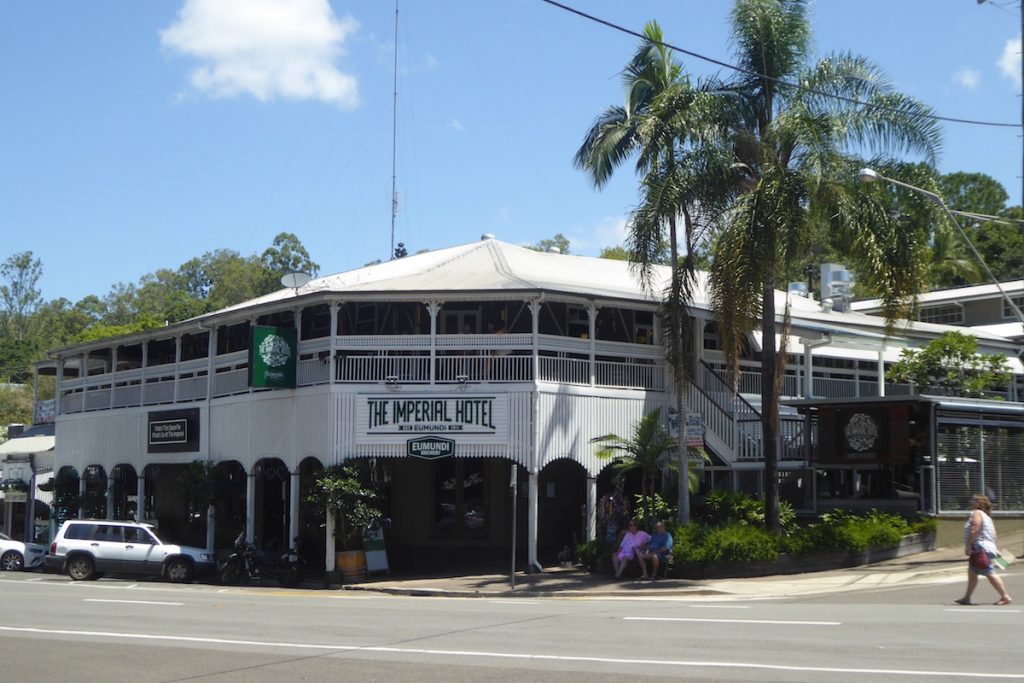
As you go inland, you climb into the hills and get into more bush walks and hiking country. There are endless places you can walk and visit, and I’m sure they are all beautiful. I’m also sure that one lifetime isn’t long enough to see them all and we elected to visit the Kondalilla Falls with its swimming hole (although I wimped out of going in as it all looked a bit on the cold side, the local kids didn’t seem to worry though).
In the Lonely Planet there is an interesting pub quiz question. Where was PL Travers, the author of the Mary Poppins books which subsequently became Disney movies born?
Answer, a small Queensland town about halfway between Brisbane and Yeppoon called Maryborough. We were passing at lunchtime so we stopped so we stopped in the sleepy little town for a sandwich and drink, and had a quick walk around the town. Poppins is definitely their claim to fame, and she and the family are present everywhere. From bronze statues to pedestrian crossings.
Touring in a car really allows you to discover little nuggets that otherwise you would miss.
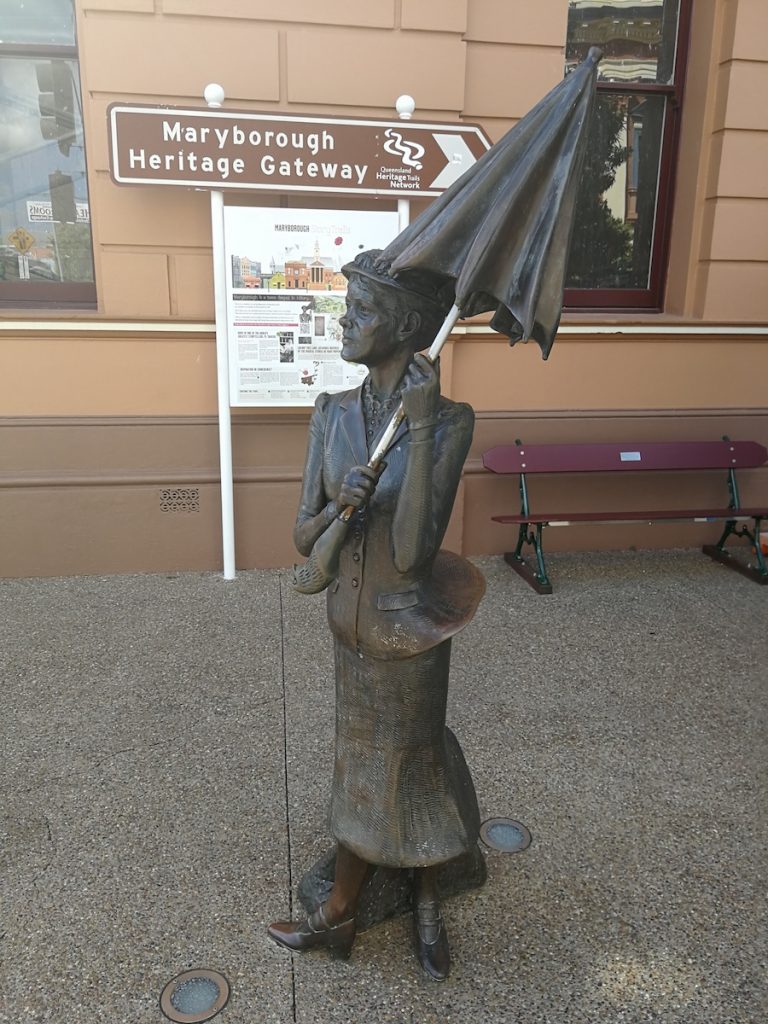
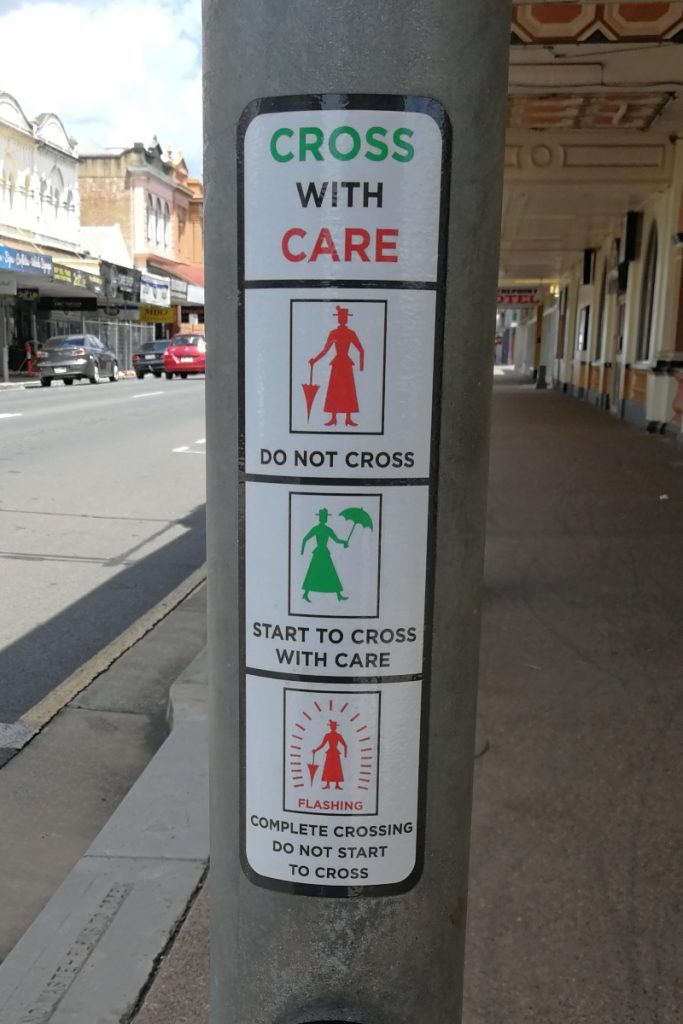
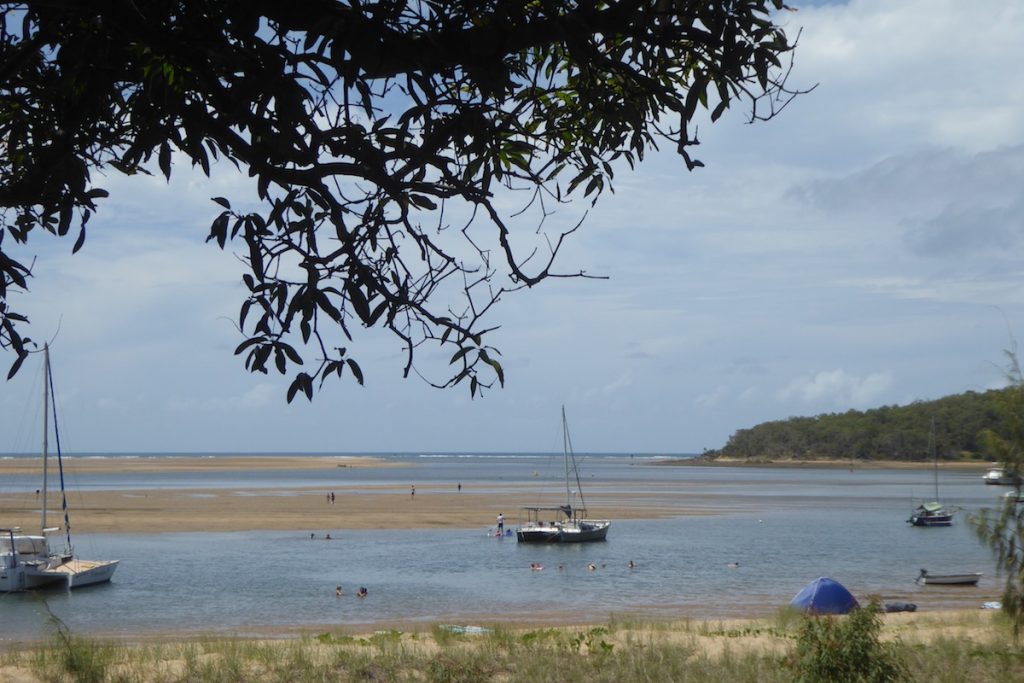
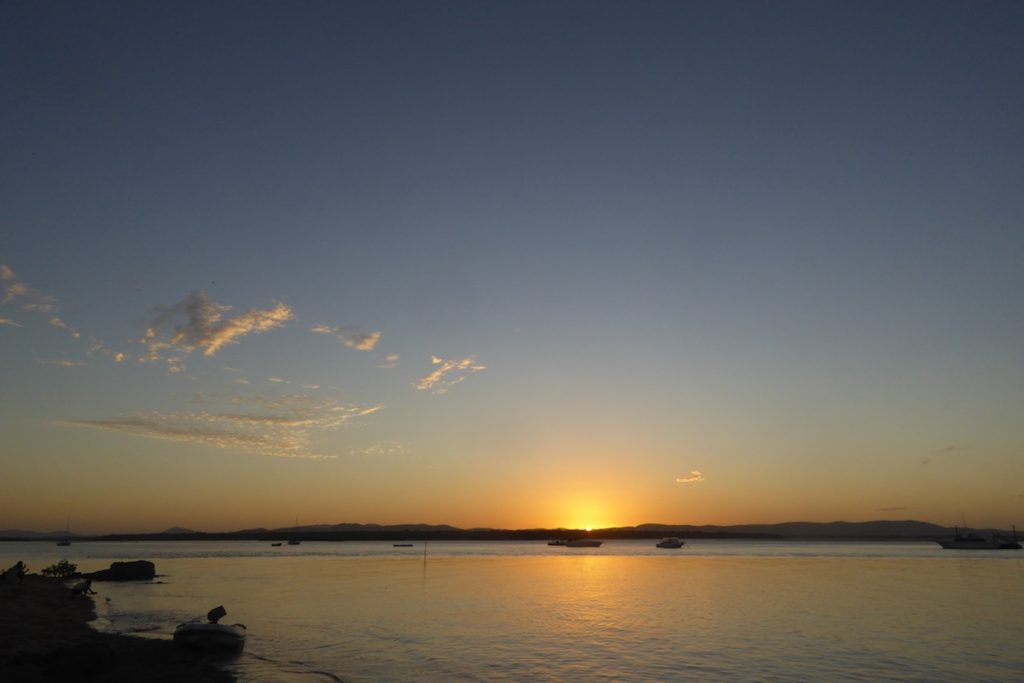
Further north is the Town of 1770. This marks the place of Cook’s first landing in Queensland in, yup, 1770. It’s a small sleepy little place on an inlet. Flat calm in comparison to the ocean facing beaches, and standing at the Cook Memorial you can visualise the Endeavour anchored out in the bay. It’s easy to imagine that not much has changed in the intervening nearly 250 years. Apart from the pub that is, just overlooking the river and in prime place for watching the sun go down with a cold beer.
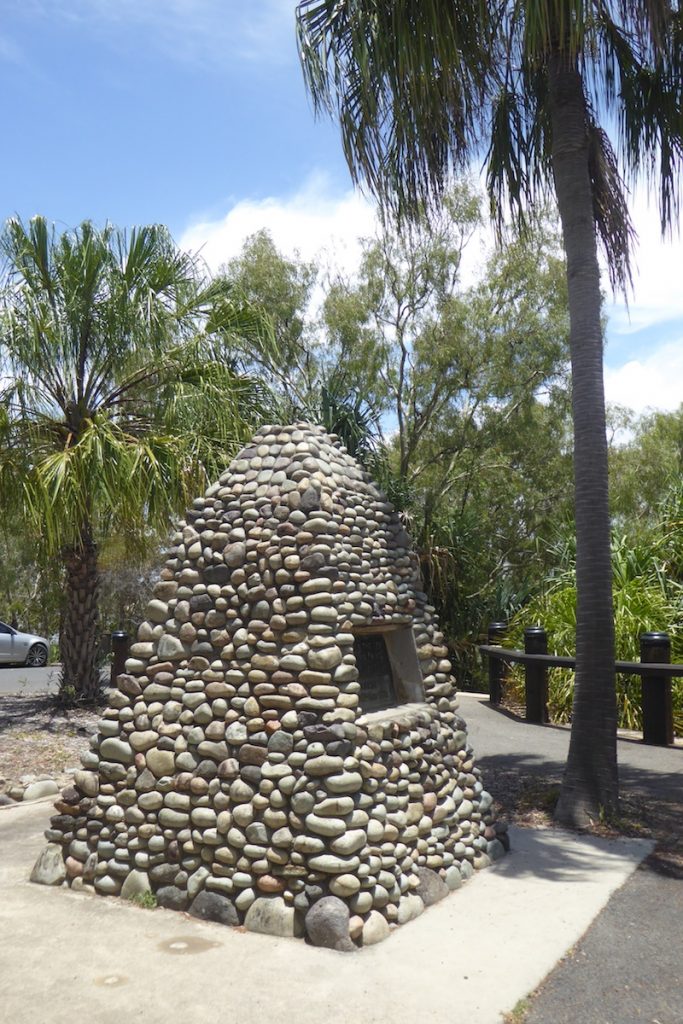
Carrying on further north we get to Yeppoon. A growing town trying to compete with Airlie Beach. Yeppoon is actually on the Capricorn Coast, and having crossed the Tropic of Capricorn at Rockhampton we’re now firmly in the tropics. Our host in Yeppoon, Thomas, a German who had been there for 16 years immediately gave us some tips for places to visit. A short walk around Bluff Point to Turtle Lookout, a day trip over to Great Keppel Island where there is excellent snorkelling (apparently it’s the only area along the Queensland coast where you can swim without a stinger suit to protect from jellyfish stings) and a trip to Byfield village (home of some excellent burgers apparently) and Stoney Creek.
The Bluff Point walk delivered on its promise and from the lookout up on the cliffs we could see turtles swimming and surfacing and doing general turtle stuff!
The next morning we caught the local ferry over to Great Keppel Island. We had our instructions. Get off the ferry, turn right and walk along the beach (none of these ferries seem to dock at a jetty or harbour, they just run a gangway into the water and you wade ashore). Find a path to Long Beach and hike over some hills to what is considered one of the top beaches in Australia apparently. After that, back over a headland to Monkey Beach for the snorkelling at low tide.
There are no facilities, so we packed lunch and water and set off. The ferry delivered us on the beach with instructions to be back by 15:50 as the ferry would be leaving at 16:00 and there were no others. The hike over to Long Beach was actually fairly hard. A rough path, some step sections, thongs and hot temperatures didn’t help much. After about 45 minutes we made it to Long Beach only to find there was not actually much of a beach there. It was high tide, and at high tide the waves were breaking right at the top of the beach where the bush ended. So we carried on on our walk, heading down what remained of the sand toward Monkey Beach.
Leaving the beach, and over a broken boardwalk over a low headland, we looked down onto the beach. And what a beach. White sands, turquoise waters, shelving rocks and it was almost completely deserted. Just one family at our end and a couple of people in the distance at the far end.
Just below us was a tree offering some shade, so we wandered along, hung bags and towels in the tree and felt a bit like Crusoe as we settled down, switched on some music, and chilled on what felt a bit like our own desert island. Particularly when the other people left and were were completely alone. The snorkelling wasn’t bad, the tide was a bit high still so the reef was still a way out, but there were plenty of fish about and I did see a brightly spotted stingray the size of a large dinner plate swimming lazily along the sandy sea bed.
I also made a friend. A tiny yellow reef fish appeared in front of my mask, and as I swam about he (I’ll call it a he, but he could have been a she) followed me. As I stood up in the shallows, he swam about my legs, and when I went back out, he continued to swim about my mask. He didn’t swim away until after I got out of the water completely.
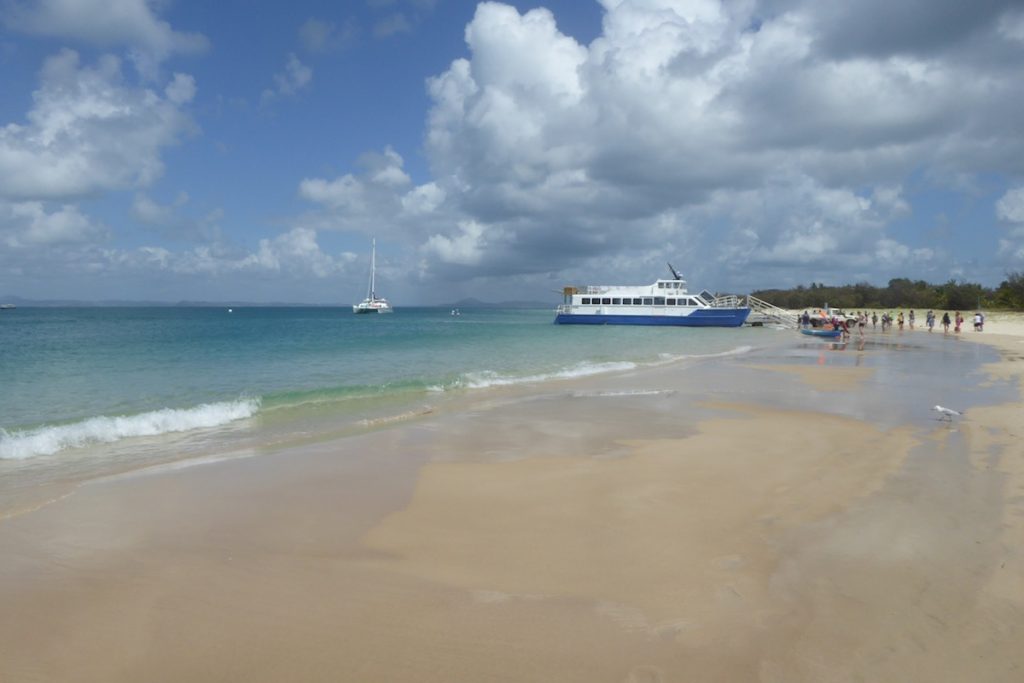
Paradise is not always without its problems though, and this is where we first encountered the dreaded sand flies. Tiny black flies were everywhere, we didn’t really think about them much until tiny red spots started appearing. They didn’t have much effect on me, but they drove Helen mad, the irritation lasting for the best part of a week.
We left in good time for the hike back, but this was much harder going. A steep path up the hillside, poorly marked, and quite rough. And it was still hot. But we did make it back to the ferry, and left satisfied (and a bit itchy) after a memorable day.
It never ceased to amaze us just how good the picnic facilities are in public places in Australia. There are BBQs everywhere, and at Stoney Creek, 11km alone an unsealed gravel road, the recreation area there was equipped with BBQs and toilets. It was miles from anywhere. Just on from there the village of Byfield seemed to have been kidnapped by aliens. We drove though it without even noticing! When we turned around and went back we nearly missed the store selling the burgers. It was closed anyway, so we never did find out if they were any good…
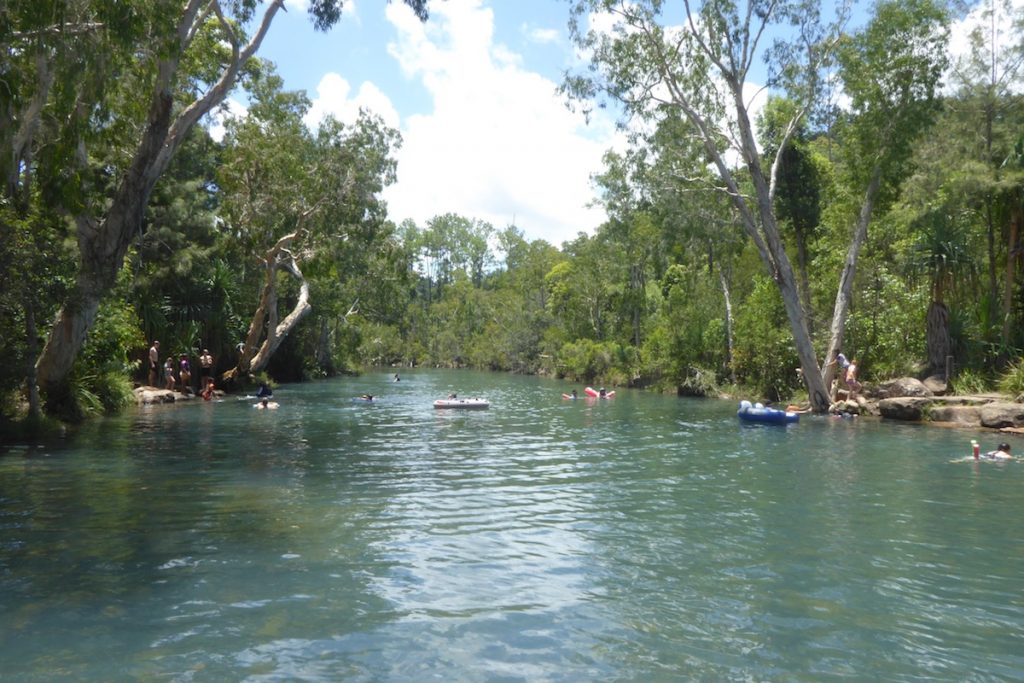
Our next port of call would be Airlie Beach. The most northerly point on our trip (in Australia), the gateway to the Whitsunday Islands and the Great Barrier Reef.
A renowned party town, we had two things we wanted to do. I wanted to swim on the reef itself and Helen wanted to revisit Whitehaven Beach, one of the most photographed beaches in Australia.
Around the town is (again) wonderful coastline and near deserted beaches such as this one, Coral Bay, where the entire beach consisted of pebbles and masses of coral fragments.
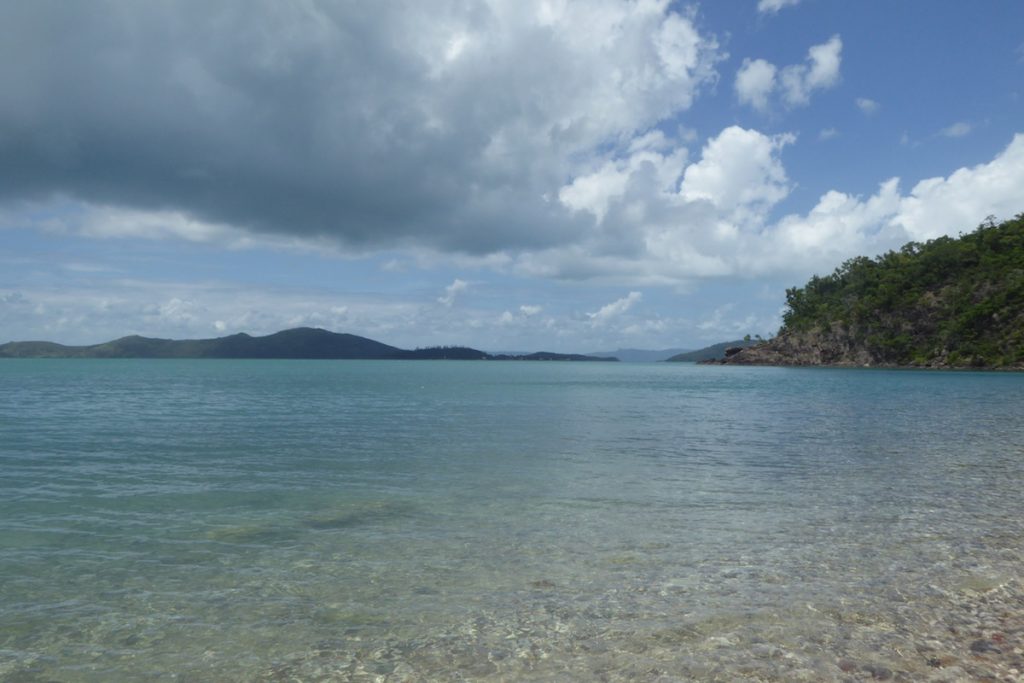
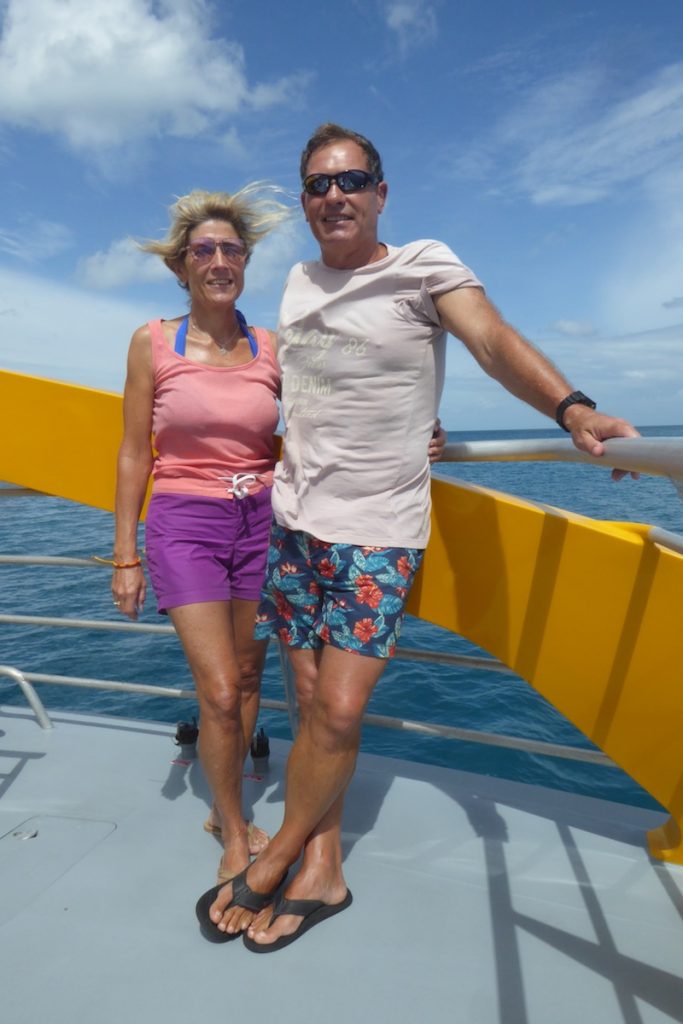
It was a windy day, the weather had already started to turn. And when we cleared the protection of the islands about an hour into the trip to the reef the swell started to get bigger.
At Airlie Beach, the reef itself is about 40 miles offshore, and our trip out there would take about two hours. What I hadn’t realised is that summertime is a bad time for snorkelling and diving on the reef. The warm seas get cloudy, and it is windy too making the surface choppy. This no doubt adding to the cloudiness of the water. I’d not been swimming anywhere near that far offshore which made me slightly nervous, so I mentioned this to the snorkel guide, who would accompany us in the water, when he asked if we had any concerns. Helen said she was worried about meeting a shark…
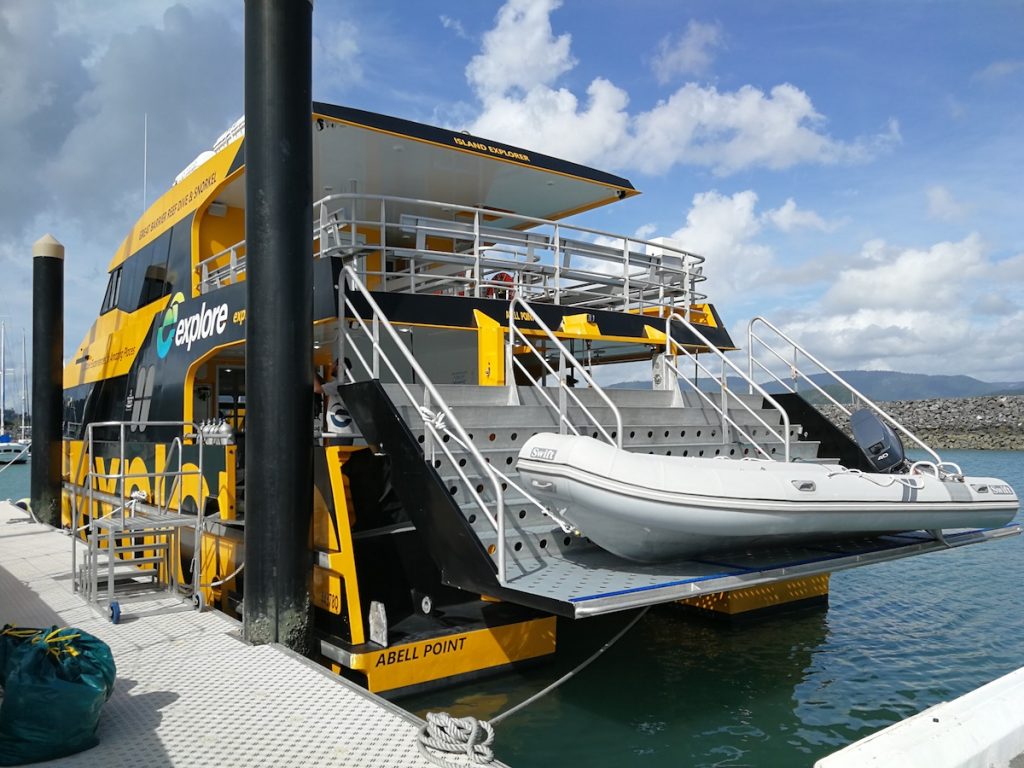
On the way out to the reef we had to complete the obligatory health and safety form, sign our lives away, and get the low down on our snorkelling activities. One of the questions was how many times have you been snorkelling and another, when did you last snorkel? On board were a couple of Chinese ladies, a mother and daughter maybe, who had never snorkelled before. Ever. If you ask me, starting 40 miles offshore takes a bit of guts, so hats off to them for doing it.
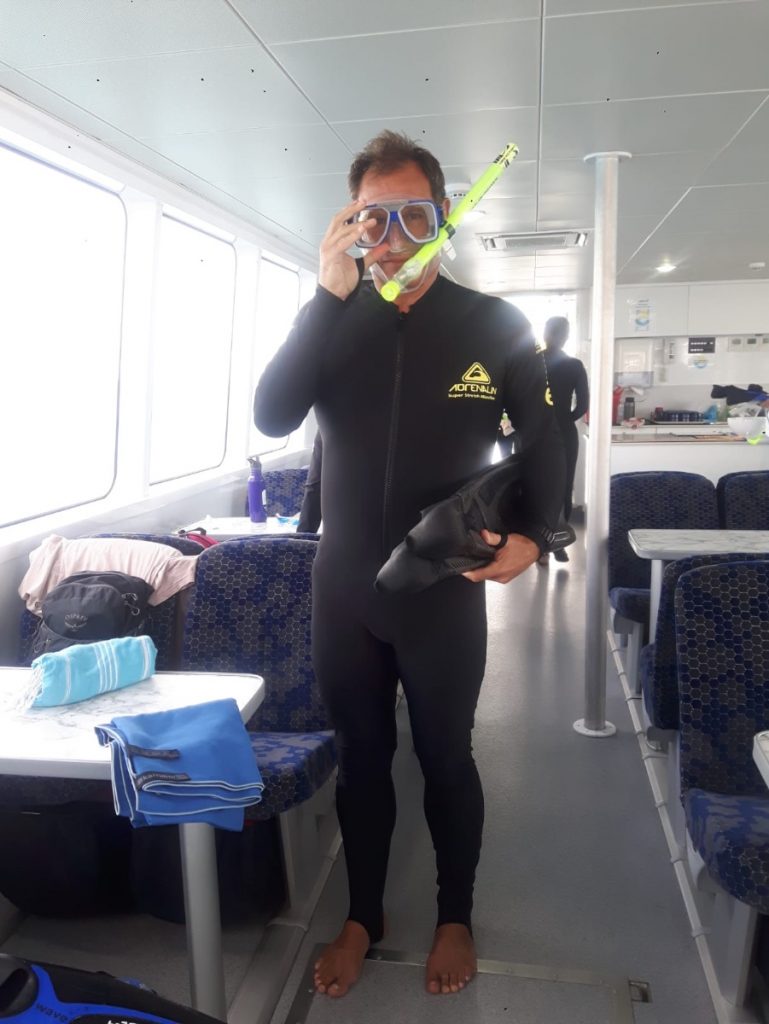
Once in position at the edge of the reef we put on the mandatory stinger suits, (thin microfibre full length affairs, to protect from the bluebottle and box jellyfish that can inflict painful stings and hospitalise people!), fins and masks, and jumped in the ocean from the back of the boat along with our noodles for buoyancy…
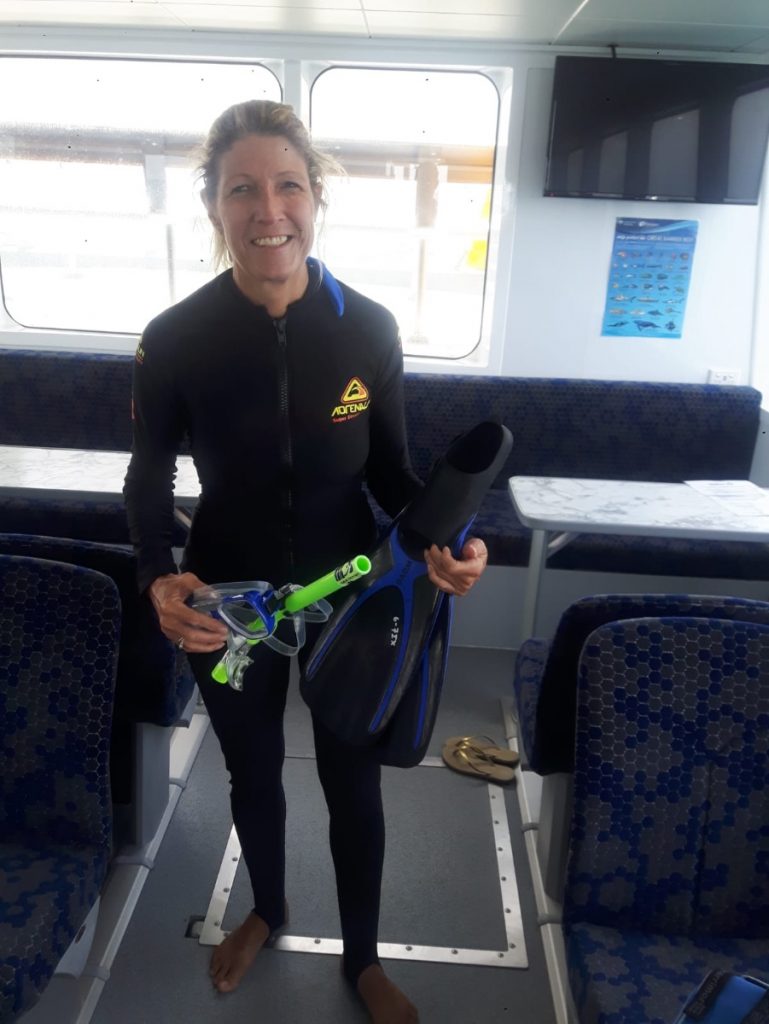
The noodles didn’t last long. They just got in the way, and soon we were exploring the edge of the reef. It was all very well organised. Our leader paddled ahead on a surf board and two other members of the crew followed up on boards. There was also an inflatable in the water so you could get out at any time.
I couldn’t possibly name or even remember all the fish and coral we saw. There was a ray around during our first excursion that we both missed, and although the water was not as clear as it would be in the winter it seemed pretty clear to me being more used to the waters around the UK and in the Mediterranean.
We were in the water for nearly an hour and a half, although it went by in a flash. Getting out I realised I’d fulfilled another of those ambitions and was both excited and slightly disappointed that I’d not seen anything very large or every exciting. Still there was always our second snorkel to come. After lunch the boat moved a short distance to a deeper part of the reef with much bigger drop offs. Deeper water means bigger fish.
I should mention at this point that our trip was run by a small outfit called Explore. Many tourist trips end up with tens or hundreds of people all clamouring for space. This was different. We were lucky in that there were on 13 people on a boat that could accommodate about 70 and were we were swimming there were no other boats. We saw one sister boat from the same company but they didn’t really come near. Another operator runs a pontoon with an underwater viewing platform so you can see the reef without getting wet. Their boats also cater for hundreds of people. And they’re more expensive. We were happy with our choice…
So we put our stinger suits back on and jumped in again. Some people had apparently had enough in the morning. There were only 9 or 10 of us in the water for the afternoon’s swim.
The deeper water certainly made a difference. More fish, and much bigger. The general idea was that we would follow the guide on his board and we would swim around a number of small reefs keeping close to the cliff Wall and then back to the boat.
Everyone acted as spotters, and soon shouts went up that a turtle was on the surface. This time I saw it. Swimming off into the distance, accompanied by handful of squid. So we carried on around, there were some pretty big fish around, grouper I think. If only I’d packed the GoPro I’d have some video to bore you with.
Then Helen’s nightmare was realised. I spotted it, a shadowy shape weaving it’s way along the bottom of the reef. The guides confirmed it. It was a shark, a white tipped reef shark to be precise.
Yes yes, it was small, and harmless, but it was pretty cool to spot a shark out there in the wild.
The wind was picking up now and the sea was getting more choppy. Every few breaths a wave would slosh over the snorkel and we’d get a mouthful of salty water. Also there was a quite a current and to get back to the boat we had to swim against it. We’d been in the water for nearly 2.5 hours in total by now and starting to get a bit tired. Getting back to the boat was hard work, but around the back were a few giant trevally. Massive silver fish (that can grow up to 1.7m and 80kg!) swimming just a few feet from our faces. Quite a rewarding end to the swim.
Was it all worth it? Absolutely. The water may not have been as clear as it can be, or as flat, but to actually see, and swim at, one of the great natural wonders of our planet is incredible. And even more so when you think of the damage that is taking place in our environments due to climate change and global warming. I just hope that it will still be there to marvel at in years to come.
Our plans to take the jet boat over to Whitsunday Island and Whitehaven Sands took a nosedive. The weather, as predicted, started to close in. The forecast was for rain and strengthening winds, and as the real reason to go was to see the amazing beach and views on the island going in the rain seemed a bit pointless. As the day progressed, the rain set in and became progressively harder. So instead of hanging around this area for as long as possible we decided to leave the next morning.
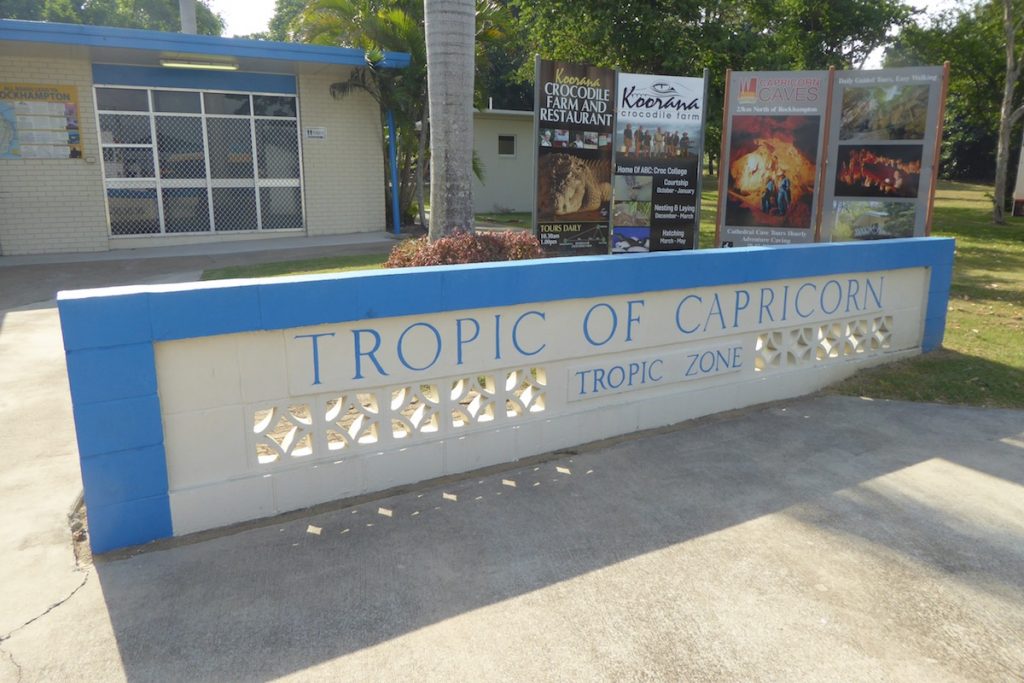
Good decision. I’ve already mentioned the rain earlier, and we were well south of Mackay before it let up. A while later we crossed the Tropic of Capricorn that runs through Rockhampton and left tropics for now. But not until after a quick picture stop.
And at the end of a long days travelling (8 hours of driving) we ended up in Bundaberg. Home to Australia’s famous Bundaberg Rum and, as it turns out, the Mon Repos Turtle Centre.
I hadn’t realised that the coast of Queensland is the breeding ground to three species of turtle; the green, the leatherback and the loggerhead. Between December and the end of February every year the female loggerheads haul themselves up the sand to dig holes and lay their clutches of eggs by the dozen. Around 8 weeks later baby hatchlings dig their way out and head for the sea.
At Mon Repos there is a research and conservation centre where turtle breeding is carefully observed and monitored. Here you can pay to witness these incredible creatures dragging themselves out of the sea to lay their eggs. Or to see the hatchlings emerge from their subterranean refuge and start their life in the ocean.
Like all wildlife watching, nothing is guaranteed. You turn up at the centre and wait. There is some turtle info about, and they play some video content about conservation etc. Essentially though you sit and wait. The rangers patrol the beach looking for females emerging from the sea to lay, or they check the clutches that may be due to hatch. Each clutch is recorded, where it is and at what time the eggs were laid. When a turtle ‘event’ occurs each group is called in turn. As we were there when females were still laying and when the babies had started to hatch we didn’t know what we might see. If anything.
When our call came, we followed the ranger onto the beach. Only a few hundred meters along we were told to wait while he went off to get an update. It was a female, out to lay her eggs, but the news wasn’t good. She’d changed her mind and was heading back to the sea, still an impressive sight and surprisingly fast. I had expected her progress to be quite slow.
So, disappointedly we were told by the ranger to follow him back to the centre and wait. Again.
Almost immediately though, we stopped. Some of the researchers had called him over. Luck was on our side again. A clutch of eggs had just started to emerge.
The team there have a set process for these events. Partly in the name of conservation (counting and measuring the hatchlings) and partly I think for the paying public.
A small pen, made of chicken wire is set up on the beach. It was this we crowded around. As each turtle emerges it is popped into the pen. Ten babies were taken away to be measured and weighed. The rest swarmed around, their instincts wanting to take then to the sea. Some escaped, but were recaptured and dropped back in their temporary pen. The rangers held a couple for us to take a closer look. So tiny, it’s amazing any survive in the wild.
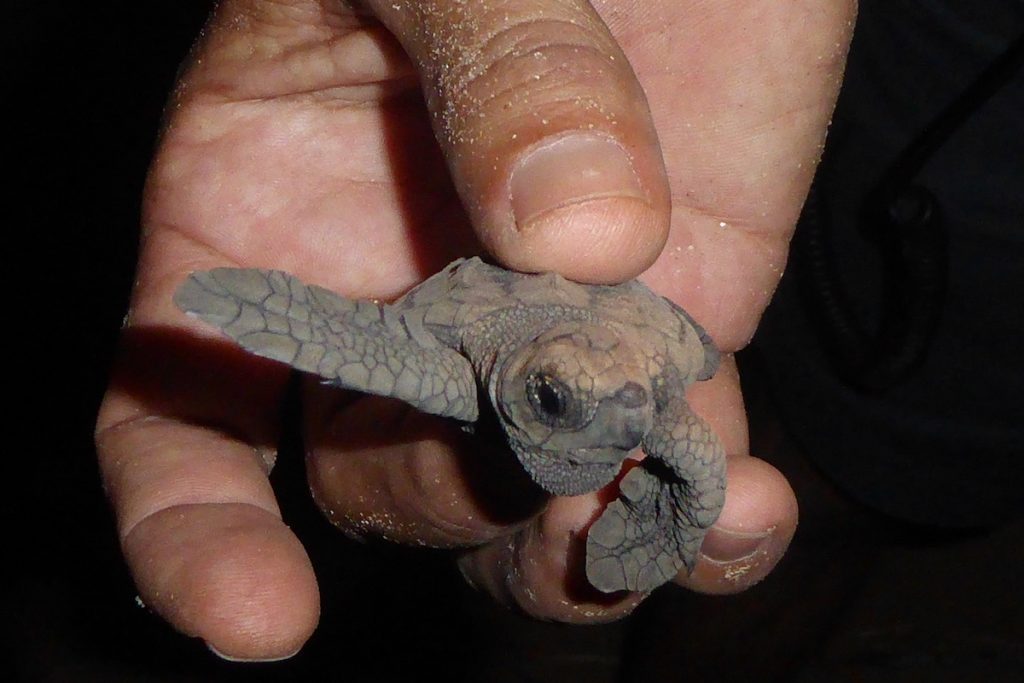
We were there on a very bad night for turtles. It was cloudy with no moon. Normally, the sea and the horizon, are noticeably brighter than the land. This is what the turtles head for when they hatch. But with so much light pollution in our skies now, that night, the lights of nearby Bargara glowed on the horizon luring the turtles along the beach and away from the sea. Well they would have, and this is where the really cool bit of this comes in.
Does anyone have a head torch? The ranger asked. By chance we’d bought batteries for Helen’s that day and I’d grabbed them as we left and shoved them in my pack. So I grabbed them, and volunteered Helen.
The ranger lined us up from the turtle’s pen down to the waters edge. Each person, facing up the beach with a torch, standing legs spread apart. At his call we switched on the torches and he released the turtles from captivity. They swarmed toward our torches, running (if that’s what turtles do) toward our lights and the sea. They went between our legs, over our toes, so close. It was so tempting to give them a hand, help them if they fell down a hole or point them the right way… Off to the left, some spurious turtles appeared. Another clutch had emerged, unnoticed, and they too were following our lights to the ocean.
Only a few minutes later the last of the stragglers had made it to the sea. Those who survived would not be back on the beach here where they return to breed every year for seventeen years. And it would be thirty before they are fully matured.
With such a long time between birth and breeding turtles need all the help they can get. There are many natural predators about for the tiny hatchlings. We saw crabs scuttling along the beach hunting them just seconds after they emerged from the sand. But now man is taking his toll, with many turtles drowning in fishing nets or consuming plastic that they can’t digest.
When we paid our money to see the turtles at Mon Repos I never dreamed that I would actually be able to help them, albeit in a tiny way. Seeing the giant mother and the tiny babies was humbling, and hearing about the dangers they face during their life made me fully realise how precipitous their survival as a species is. I have been lucky enough to have seen them swimming at Yeppoon and on the Gt Barrier Reef. This seems to be a theme, but so many of the creatures we’ve seen are threatened. You see it on the TV, and programme makers do a fantastic job, but seeing things first hand, and seeing how conservationists are striving to help these creatures makes it all so much more real.
Definitely one of the highlights of our whole trip.
We still had a couple of days left before we had to drop off the car and join up with Andy and Shelly in Redcliffe, just North of Brisbane. When we stayed at Alexandra Heads we didn’t get chance to properly go inland and visit the Glasshouse Mountain, a place brimming with aboriginal mythology, so we booked in to the same accommodation again (almost seemed like going home!) for one more night to swim one last time at Noosa Heads and to explore inland a little.
The Glasshouse Mountains were latterly named by Capt. Cook as they reminded him of the glass furnaces from his home county of Yorkshire, and are volcanic peaks that rise dramatically out of the coastal plain as thirteen hills the highest of which is 556 meters high.
As I said, the place is steeped in mythology, and explanation of which can be found here if you’re interested in reading some more.
We climbed one of the smaller peaks, Mt. Ngungen, and the views from the top are both spectacular and far reaching.
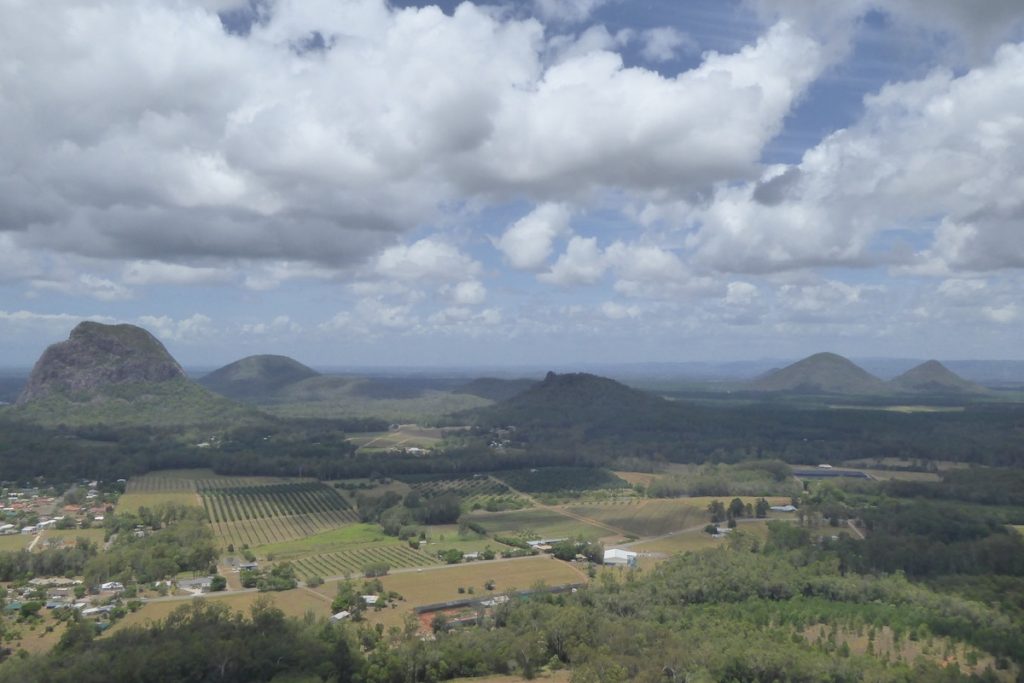
Which leads us to Brisbane and our stay with Andy. As with everyone else in Helen’s family we couldn’t have been made to feel more welcome. Beer, pool, drop off the car and back for cocktails along the sea front. The first morning we were there was the stat of the Six Nations, France vs Wales. I woke up at half time, 6:30am and went through to the sitting room. Andy and Helen had been up watching since the 5:45 am kick off. I was greeted by something like; “you might as well go back to bed , this is s###, we’re getting stuffed…”. We know what happened after that…
What happened after that for us is that we spent the next three days seeing the area in which Andy and Shelly live and the delights of Brisbane. Redcliffe is a really nice area. Near a lovely beach (they live maybe a three minute walk away) with lots of new building going on around. There’s a bustling sea font with lots of restaurants, an alley I’m celebrating the Bee Gees who originate rom Redcliffe (who knew that?) and a chippy called Yabbey Road celebrating The Beatles!
Also on Sunday is a street market along the sea front closing to rod for a few hours with a mix of street food stalls, fresh produce handicrafts, clothes etc. We spent a couple of urs wandering up and down, sampling some food (coffee, calamari, figs…) and generally enjoying the chilled day vibe.
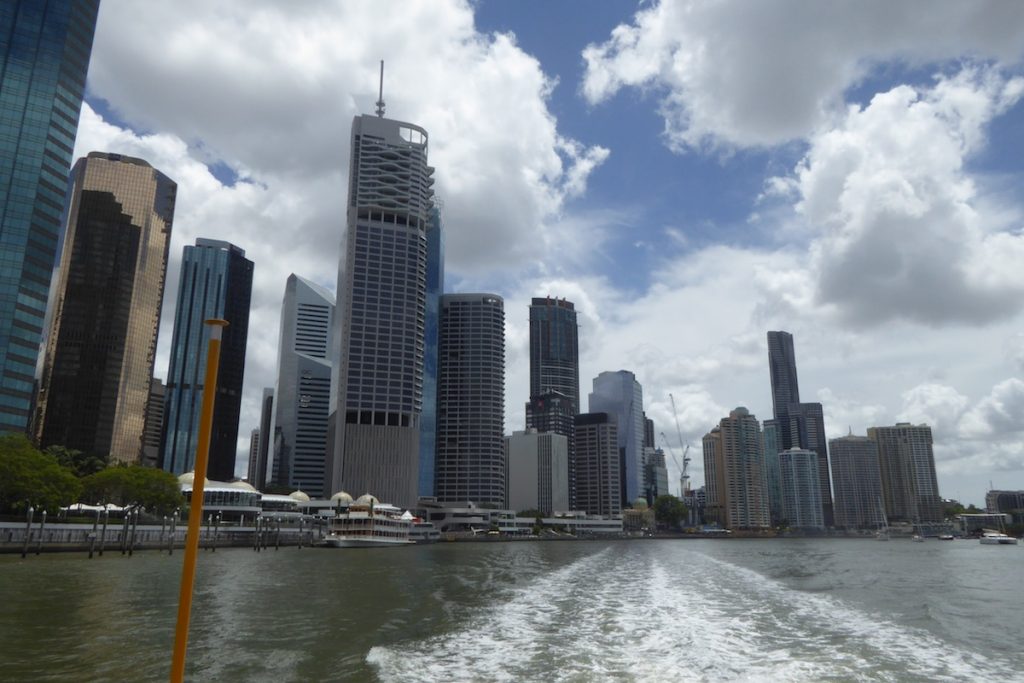
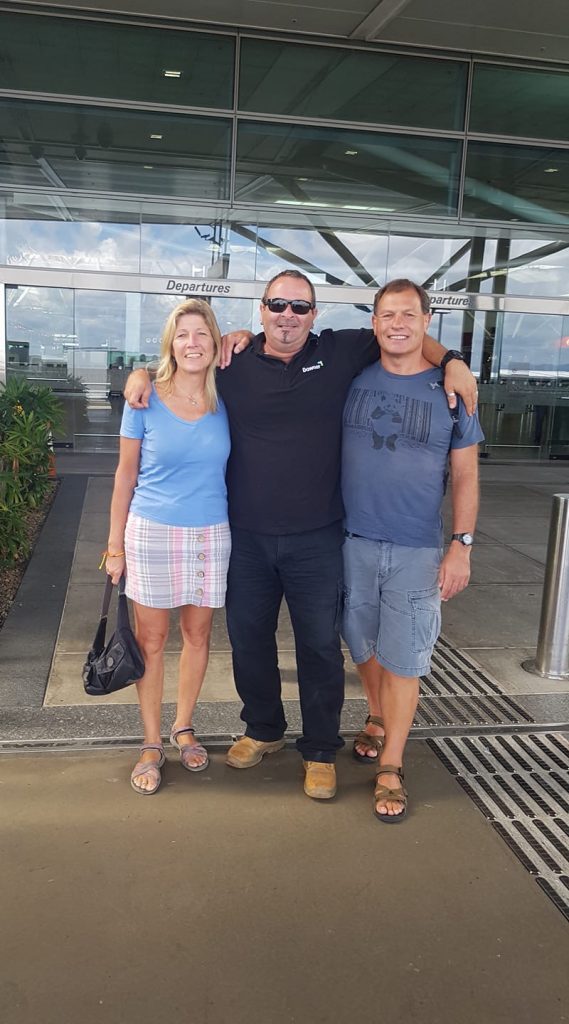
We also saw a bit of Brisbane. From the river on the water tax and from the bank walking through the man made beach and pool complex in the centre of the city. Amazingly, as is the case the so much in this country, it was completely free. And there were life guards on duty too. So we sat down and had a beer while watching the world enjoying its Sunday in the sun.
We also had a steak lunch at the well known Breakfast Creek Hotel. This is where we met Andy’s good friends Byron and Sue. Now living in Brisbane, they are actually Kiwis, and when they found out that New Zealand was or next destination and that were planning to visit Rotorua, they said that we could stay in their house as it was currently empty. This sums up again the generosity that we experienced time and time again thought our trip. And we did take up their kind offer.
Sadly, our trip to Australia and our brief stay in Brisbane came to an end too quickly. Andy kindly took us too the airport, and our last emotional farewell took place. I hadn’t expected to see Andy shed a tear as he took one last selfie outside the departures hall and set us off on our way to Aotearoa, the Land of the Long White Cloud.
Once again many thanks to John & Yvonne, Alison & Andrew (and Sarah & Laura), Sian & Rick (and Ella & Zak), Andy & Shelly and to Paul & Alison for making our stay in the land down under so enjoyable and truly memorable.
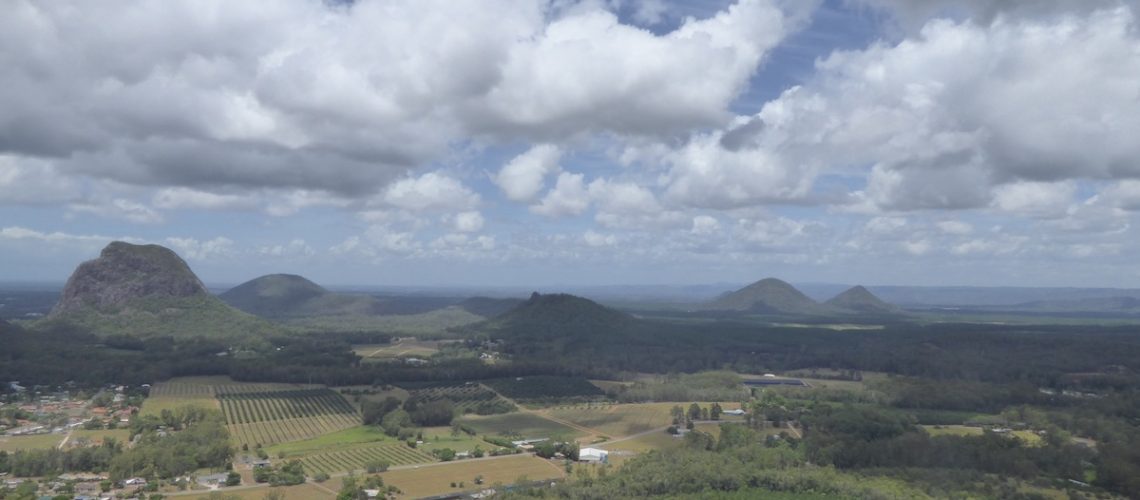
2 thoughts on “The Aussie Road Trip pt. II 🇦🇺”
Totally agree – your writing style is evocative of the experiences and places you are visiting- maybe the next job for a magazine or holiday company… trailfinders…?
I have been to Noosa and loved it and also Frazer Island and dived the Outer Barrier Reef our of Port Douglas… it is a really memorable experience!
Sad to see the flights home are booked in June… but pleased I’ll get to see you soon!!
Keep having fun!! ?
As usual, a brilliant composition Jon!
I will say again that you have a gift and could easily report/write for a travel magazine. You should approach the ‘Lonely Planet’ about doing an update on their publications and get paid to do your trip all over again!
This report was obviously enjoyable to read as it was written in our back yard so I knew a lot of the places you described. You certainly captured the ‘vibe’ of Queensland perfectly.
Miss you both already and can’t wait until we can drink pints together again. (I loved your comment about ordering beer and you have passed the ‘new Aussie’ test admirably by realising that the easiest way is just to ‘order the biggest glass available!’
Cheers mate.